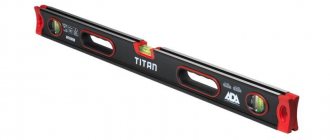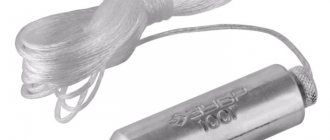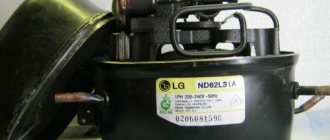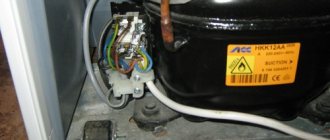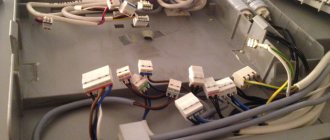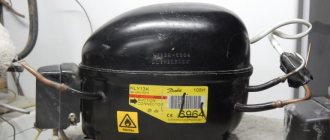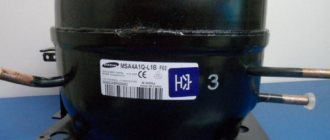Often, when choosing a new refrigerator, the buyer does not pay attention to such a criterion as the noise level of the refrigerator. An annoying rumble can be an unpleasant surprise. Noisiness is the value of the hum expressed as a digital value. Measured in decibels (dB). The device with the lowest value produces less hum.
Refrigeration equipment noise standards
In accordance with GOST 16317-87, the established noise level for a refrigerator should be no more than 53 dB. The state document has approved a scale according to which the noise of devices is divided into three levels:
- low – from 25 to 34 dB;
- average – from 35 to 44 dB;
- high – more than 45 dB.
Devices of a certain modification have an individual noise level.
- the norm for refrigeration equipment with the noFrost system is from 44 to 47 dB;
- devices with a different system operate with a hum level in the range of 34-42 dB.
The operating hum level of the selected refrigerator model is stated in the technical data sheet and on a sticker on the back surface of the equipment.
What to remember when choosing a refrigerator.
- The more complex the model, the more additional functions and technical capabilities, the more difficult it is to achieve minimal noise. For example, the noFrost system has a fan that operates with a certain hum. You can reduce the impact of noise on humans by installing the refrigerator at the maximum distance from living rooms.
- Two-compressor refrigerators operate in succession; in this case, it is impossible to completely eliminate noise. Manufacturers minimize noise levels by choosing low-power compressors. In this case, the refrigerator will make noise when each compressor turns on and off, but the overall noise level may be even lower than with single-compressor equipment.
For comparison: the noise created by a conversation in a loud voice is 50 dB, the hum from a clock is 30 dB, the noise from the keys of a typewriter is from 51 to 70 dB, the noise of tree leaves is approximately 25 dB.
Noise scale
In the descriptions of certain household appliances, one often sees mention of such a characteristic as noise level. The parameter is indicated in numbers, without comments, for example “up to 42 dB” or “69 dB” and so on. For an uninitiated person, of course, it will be quite difficult to understand this - at a minimum, you will have to open Yandex or Google in search of clear and simple explanations. That is why we decided to give some simple examples of what is hidden behind the dry numbers. To do this, we have built a special list where you can easily and quickly find the information you are interested in, and most importantly, understand what it is without any extra effort. Noise scale 0 dB Nothing is heard - understandable; 5 dB Almost inaudible, that is, barely perceptible sounds that some may not even hear; 10 dB Almost inaudible. This sound is comparable to the distant rustling of leaves. The quiet sound is also slightly perceptible; 15 dB Barely audible. More distinct rustling of leaves with a slight gust of wind; 20 dB Barely audible, but already noticeable. This sound is similar to a person whispering at a distance of one meter; 25 dB Human whisper, at a distance of less than one meter; 30 dB Quiet. Quite a distinct whisper, and the sound is comparable to the ticking of a wall clock. It should be noted that this maximum is permissible according to the standards for apartments and residential premises at night, from 23:00 to 7:00; 35 dB Quite audible. Slightly muffled conversation of people; 40 dB Normal everyday speech, quiet conversation between people. This threshold is the daily norm for residential premises, from 7:00 a.m. to 11:00 p.m.; 45 dB Audible. An ordinary conversation with the presence of certain notes of indignation or emotionality; 50 dB People talking clearly. The sound is also comparable to the operation of a typewriter; 55 dB Clear conversation between several people. This limit is the upper norm for class “A” office premises. Examples of such offices are new buildings, business centers, where, as a rule, the management or branches of foreign companies are located; 60 dB Noisy. The atmosphere is the norm for ordinary offices, offices where there is continuous communication with clients by phone, various negotiations and the operation of office equipment; 65 dB Noisy. Sound is characterized by loud conversations at a distance of one meter; 70 dB Somewhat noisier. Loud conversations of people, at a distance closer than one meter; 75 dB Loud conversations that develop into shouting or laughter, closer than one meter; 80 dB Very noisy. Constant screaming, the sound of a motorcycle with a muffler; 85 dB Constant, very loud scream, also on a motorcycle with a muffler; 90 dB Very noisy, surrounded by several loud screams. The sound of a freight railway car seven meters away; 95 dB Very noisy. Subway car outside or inside the car; 100 dB Extremely noisy. Rolls of thunder. Heavy Metal concert. This threshold is the maximum permissible sound pressure for the player’s headphones; 105 dB Extremely noisy. The sound characteristic of airplanes, until the 80s of the twentieth century; 110 dB Helicopter; 115 dB Sandblaster, jackhammer at a distance of more than one meter; 120 dB Sandblaster, jackhammer at a distance of less than one meter; 125 dB Almost unbearable. The plane is at the start; 130 dB Pain threshold; 135 dB Contusion; 140 dB Concussion. The sound of a jet plane taking off one meter away; 145 dB Contusion. Rocket launch; 150 dB Contusion, resulting in moderate injuries; 155 dB Contusion, with severe injuries; 160 dB Shock, concussion, extremely severe injuries. Shock wave of a supersonic aircraft; 160 dB - 200 dB Possible rupture of eardrums and lungs; More than 200 dB Death. Be careful and careful when choosing large household appliances, as well as power tools for heavy work. Too much noise can cause harm. However, in order to protect your hearing in the normal rhythm of life, there are a few simple tips: - Any extraneous noise, even the one to which you are accustomed, still affects the body in one way or another. Therefore, if you are going to do home renovations, then to reduce noise it is better to use noise-insulating environmentally friendly materials; — You should not increase the sound volume in the player’s headphones in order to drown out external noise sources (for example, in the subway or on the street). Since this also increases electromagnetic radiation from the headphone speaker, which adversely affects the brain. In general, it is advisable to use “on-ear” headphones, while in-ear headphones should be individually “tailored” to the ear; — During active recreation, for example, when diving, you should vent in time (by venting your ears by swallowing or holding your nose) to prevent the eardrum from rupturing. When jumping with a parachute, it is also necessary to equalize the pressure in a timely manner so as not to get barotrauma. Its consequences: noise and ringing in the ears, hearing loss, pain, and even nausea and dizziness; - Let your ears rest more often. Listen to the silence.
Methods for measuring noise levels
You can determine the noise level of the selected device using special equipment - a sound level meter. The cost of the device is quite high, so there is no point in buying it for household needs. If you want to find out what the noise level of a refrigerator is in an apartment, just invite a specialist.
If you have a sound level meter, you need to set it to read between 50 and 100 dB and point the microphone towards the refrigerator, maintaining a distance of approximately 50 cm. After a few seconds, the measurement results will be displayed on the screen.
Expert advice: if the value is greater than that specified in the technical data sheet, most likely the refrigeration equipment is installed unevenly. It is necessary to check the vertical and horizontal levels, twisting the legs to adjust the position of the refrigerator. If the indicator has not changed after repeated measurements, you should invite a specialist.
How to measure noise
If you are unhappy with the noise level of your refrigerator, then use a sound meter to determine the level. After this, you can look for the reason. The most common devices are Orbitron, Casella, Extech, Iskra. True, even a household appliance is not cheap (from 3,000 rubles), and it is not advisable to buy it just to measure the noise of a refrigerator. Therefore, it is easier to measure the level of extraneous sounds by inviting a specialist.
If you already have a sound level meter, then set the settings in the range of 50-100 dB, and aim the microphone of the device at the body. The device must be kept at a distance of 50 cm from the refrigeration unit. On the display of the device you will see what noise level your refrigerator has.
When purchasing a refrigerator, you should know that units with the “No Frost” system will hum louder, since they can be equipped with not one compressor and fan, but two.
Causes of noise
- Compressor operation. If two compressors are installed in the device, the level will be higher accordingly. Despite the fact that two-compressor devices are additionally equipped with noise-reducing devices, they operate louder than single-compressor devices.
- Noise is created by parts that come into contact with the compressor during operation.
- The hum is created by the refrigerant as it moves through the condenser and evaporator.
- Additional sounds - characteristic clicks - are heard when the relay is activated.
- The presence of cooling fans creates a hum; the more of them, the louder the refrigerator operates.
- As a rule, small refrigerators are noisier than larger ones. This is due to the fact that the compressor is installed on the outer wall of the device.
- New devices are somewhat louder in the first days, as the moving parts are grinding in.
The noisiest are large-volume devices, the design of which includes a fan installed in the motor part. The main criterion for a device to be noisy is a restful night's sleep. If you feel that the equipment is loud, but you do not wake up at night, this means that the device is working properly and is functioning within normal limits.
Note: when choosing a specific model, you need to correctly prioritize. It should be borne in mind that a single-compressor refrigerator is quieter, but produces less cold in hot weather. At the same time, a two-compressor device operates louder, but freezes much better.
Table
From the table below, everyone can find out how many decibels constitute the permitted noise level in an apartment during the day and at night on weekdays and weekends.
| Times of Day | Daytime | At night time |
| Maximum noise level | Up to 40 decibels | 30 decibels |
| Time | From 7:00 to 23:00 | From 23.00 to 7.000 |
| Weekends and holidays | From 10.00 to 22.00 | From 23.00 to 10:00 |
| Other nuances | Afternoon rest time is from 13.00 to 15.00. Noisy work is excluded |
You can add 15 decibels to the table values of 40 or 30 decibels. They are given for possible excesses of the specified limits, which are also not subject to a fine.
For example, if a sound level meter recorded that the noise level in an apartment is 55 decibels, then this is not a reason to contact the authority, since the indicators were exceeded by only the permissible 15 decibels. But if the noise level is already 56 decibels, then this is a direct violation of current legislation.
Ways to reduce noise
- First of all, you need to check the surface on which the refrigerator is installed - it must be perfectly flat. If necessary, rubber layers are placed under the legs.
- It is important that the appliance does not come into contact with kitchen furniture.
- Do not place dishes close together inside the refrigerator.
- If possible, use only one camera.
- Use sound insulation to isolate the noisiest parts. Rubber, which is fixed between the wall and the back surface of the device, effectively absorbs the noise.
- The inside of the chamber is lined with Shumka.
- If the compressor and fan are located outside the refrigeration equipment, mastic can be applied around them.
Review of the quietest refrigerator models
| Trademark | Model | Noise level, dB | Note |
| Liebherr | ST 3306 | Less than 40 | Single compressor |
| Liebherr | CUP 3021-22 | 39 | With noFrost system |
| Electrolux | ENB 38943 X | Less than 40 | With noFrost system |
| Electrolux | EN 3881 AOX | Less than 40 | Single compressor |
| Bosch | KGS 39 XW 20 | Less than 40 | Two-compressor |
| Samsung | RL-59 GYBMG | 38,5 | With noFrost system |



